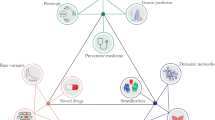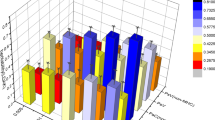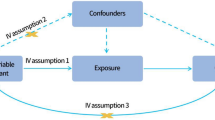Abstract
We extended our previous genome-wide association study for psoriasis with a multistage replication study including 8,312 individuals with psoriasis (cases) and 12,919 controls from China as well as 3,293 cases and 4,188 controls from Germany and the United States and 254 nuclear families from the United States. We identified six new susceptibility loci associated with psoriasis in the Chinese study containing the candidate genes ERAP1, PTTG1, CSMD1, GJB2, SERPINB8 and ZNF816A (combined P < 5 × 10−8) and replicated one locus, 5q33.1 (TNIP1-ANXA6), previously reported (combined P = 3.8 × 10−21) in the European studies. Two of these loci showed evidence for association in the German study at ZNF816A and GJB2 with P = 3.6 × 10−3 and P = 7.9 × 10−3, respectively. ERAP1 and ZNF816A were associated with type 1 (early onset) psoriasis in the Chinese Han population (test for heterogeneity P = 6.5 × 10−3 and P = 1.5 × 10−3, respectively). Comparisons with the results of previous GWAS of psoriasis highlight the heterogeneity of disease susceptibility between the Chinese and European populations. Our study identifies new genetic susceptibility factors and suggests new biological pathways in psoriasis.
This is a preview of subscription content, access via your institution
Access options
Subscribe to this journal
Receive 12 print issues and online access
$209.00 per year
only $17.42 per issue
Buy this article
- Purchase on Springer Link
- Instant access to full article PDF
Prices may be subject to local taxes which are calculated during checkout

Similar content being viewed by others
References
Smith, R.L., Warren, R.B., Griffiths, C.E. & Worthington, J. Genetic susceptibility to psoriasis: an emerging picture. Genome Med. 1, 72 (2009).
Hüffmeier, U. et al. Characterisation of psoriasis susceptibility locus 6 (PSORS6) in patients with early onset psoriasis and evidence for interaction with PSORS1. J. Med. Genet. 46, 736–744 (2009).
Nestle, F.O., Kaplan, D.H. & Barker, J. Psoriasis. N. Engl. J. Med. 361, 496–509 (2009).
Nair, R.P. et al. Genome-wide scan reveals association of psoriasis with IL-23 and NF-kappaB pathways. Nat. Genet. 41, 199–204 (2009).
Zhang, X.J. et al. Psoriasis genome-wide association study identifies susceptibility variants within LCE gene cluster at 1q21. Nat. Genet. 41, 205–210 (2009).
Liu, Y. et al. A genome-wide association study of psoriasis and psoriatic arthritis identifies new disease loci. PLoS Genet. 4, e1000041 (2008).
Helms, C. et al. A putative RUNX1 binding site variant between SLC9A3R1 and NAT9 is associated with susceptibility to psoriasis. Nat. Genet. 35, 349–356 (2003).
Speckman, R.A. et al. Novel immunoglobulin superfamily gene cluster, mapping to a region of human chromosome 17q25, linked to psoriasis susceptibility. Hum. Genet. 112, 34–41 (2003).
Helms, C. et al. Localization of PSORS1 to a haplotype block harboring HLA-C and distinct from corneodesmosin and HCR. Hum. Genet. 118, 466–476 (2005).
Grewal, T. & Enrich, C. Annexins–modulators of EGF receptor signalling and trafficking. Cell. Signal. 21, 847–858 (2009).
Serwold, T., Gaw, S. & Shastri, N. ER aminopeptidases generate a unique pool of peptides for MHC class I molecules. Nat. Immunol. 2, 644–651 (2001).
Harvey, D. et al. Investigating the genetic association between ERAP1 and ankylosing spondylitis. Hum. Mol. Genet. 18, 4204–4212 (2009).
Davidson, S.I. et al. Association of ERAP1, but not IL23R, with ankylosing spondylitis in a Han Chinese population. Arthritis Rheum. 60, 3263–3268 (2009).
Enerbäck, C. et al. Significantly earlier age at onset for the HLA-Cw6–positive than for the Cw6-negative psoriatic sibling. J. Invest. Dermatol. 109, 695–696 (1997).
Espina, A.G. et al. Induction of Dlk1 by PTTG1 inhibits adipocyte differentiation and correlates with malignant transformation. Mol. Biol. Cell 20, 3353–3362 (2009).
Hunter, J.A. et al. The relationship between pituitary tumour transforming gene (PTTG) expression and in vitro hormone and vascular endothelial growth factor (VEGF) secretion from human pituitary adenomas. Eur. J. Endocrinol. 148, 203–211 (2003).
Hamid, T., Malik, M.T. & Kakar, S.S. Ectopic expression of PTTG1/securin promotes tumorigenesis in human embryonic kidney cells. Mol. Cancer 4, 3 (2005).
Young, H.S., Summers, A.M., Bhushan, M., Brenchley, P.E. & Griffiths, C.E. Single-nucleotide polymorphisms of vascular endothelial growth factor in psoriasis of early onset. J. Invest. Dermatol. 122, 209–215 (2004).
Han, J.W. et al. Genome-wide association study in a Chinese Han population identifies nine new susceptibility loci for systemic lupus erythematosus. Nat. Genet. 41, 1234–1237 (2009).
Graham, R.R., Hom, G., Ortmann, W. & Behrens, T.W. Review of recent genome-wide association scans in lupus. J. Intern. Med. 265, 680–688 (2009).
Kraus, D.M. et al. CSMD1 is a novel multiple domain complement-regulatory protein highly expressed in the central nervous system and epithelial tissues. J. Immunol. 176, 4419–4430 (2006).
Kamal, M. et al. Loss of CSMD1 expression is associated with high tumour grade and poor survival in invasive ductal breast carcinoma. Breast Cancer Res. Treat. 121, 555–563 (2009).
Zhang, W. et al. Expressions of connexin 32 and 26 and their correlation to prognosis of non-small cell lung cancer. Chin. J. Cancer 28, 173–176 (2009).
Bowcock, A.M. et al. Insights into psoriasis and other inflammatory diseases from large-scale gene expression studies. Hum. Mol. Genet. 10, 1793–1805 (2001).
Djalilian, A.R. et al. Connexin 26 regulates epidermal barrier and wound remodeling and promotes psoriasiform response. J. Clin. Invest. 116, 1243–1253 (2006).
Haider, A.S. et al. Identification of cellular pathways of 'type 1', Th17 T cells, and TNF- and inducible nitric oxide synthase-producing dendritic cells in autoimmune inflammation through pharmacogenomic study of cyclosporine A in psoriasis. J. Immunol. 180, 1913–1920 (2008).
Meyer-Hoffert, U., Wingertszahn, J. & Wiedow, O. Human leukocyte elastase induces keratinocyte proliferation by epidermal growth factor receptor activation. J. Invest. Dermatol. 123, 338–345 (2004).
Meyer-Hoffert, U. Reddish, scaly, and itchy: how proteases and their inhibitors contribute to inflammatory skin diseases. Arch. Immunol. Ther. Exp. (Warsz.) 57, 345–354 (2009).
Gamsjaeger, R., Liew, C.K., Loughlin, F.E., Crossley, M. & Mackay, J.P. Sticky fingers: zinc-fingers as protein-recognition motifs. Trends Biochem. Sci. 32, 63–70 (2007).
Capon, F. et al. Identification of ZNF313/RNF114 as a novel psoriasis susceptibility gene. Hum. Mol. Genet. 17, 1938–1945 (2008).
Zhang, F.R. et al. Genomewide association study of leprosy. N. Engl. J. Med. 361, 2609–2618 (2009).
Stacey, S.N. et al. Common variants on chromosomes 2q35 and 16q12 confer susceptibility to estrogen receptor-positive breast cancer. Nat. Genet. 39, 865–869 (2007).
Burton, P.R. et al. Association scan of 14,500 nonsynonymous SNPs in four diseases identifies autoimmunity variants. Nat. Genet. 39, 1329–1337 (2007).
Purcell, S. et al. PLINK: a tool set for whole-genome association and population-based linkage analyses. Am. J. Hum. Genet. 81, 559–575 (2007).
Pe'er, I., Yelensky, R., Altshuler, D. & Daly, M.J. Estimation of the multiple testing burden for genomewide association studies of nearly all common variants. Genet. Epidemiol. 32, 381–385 (2008).
Higgins, J.P. & Thompson, S.G. Quantifying heterogeneity in a meta-analysis. Stat. Med. 21, 1539–1558 (2002).
Higgins, J.P., Thompson, S.G., Deeks, J.J. & Altman, D.G. Measuring inconsistency in meta-analyses. Br. Med. J. 327, 557–560 (2003).
Mantel, N. & Haenszel, W. Statistical aspects of the analysis of data from retrospective studies of disease. J. Natl. Cancer Inst. 22, 719–748 (1959).
DerSimonian, R. & Laird, N. Meta-analysis in clinical trials. Control. Clin. Trials 7, 177–188 (1986).
Bourgain, C. et al. Novel case-control test in a founder population identifies P-selectin as an atopy-susceptibility locus. Am. J. Hum. Genet. 73, 612–626 (2003).
Thornton, T. & McPeek, M.S. Case-control association testing with related individuals: a more powerful quasi-likelihood score test. Am. J. Hum. Genet. 81, 321–337 (2007).
Acknowledgements
We thank the individuals and their families who participated in this project; the study staff; S.-H. Duan for her contribution to the genotyping; and X.-B. Zuo for his help in creating the GWAS database, the data processing and the statistical analysis. This study was funded by the High-Tech Research and Development Program of China (863 Plan) (2007AA02Z161), the Key Project of Natural Science Foundation of China (30530670), Anhui Provincial Special Scientific Program (2007-7), the National Basic Research Program of China (973 Plan) (2007B516801), the General Program of National Natural Science Foundation of China (30771196, 30771942, 30800990, 81072461, 81071285, 30972727, 30800610 and 81000691), US National Institutes of Health (NIH) grant R01AR050266 (to A.M.B.), NIH grants R01AR42742, R01AR050511 and R01AR054966 (to J.T.E.), the German Ministry of Education and Research through the National Genome Research Network (BMFT 01GS 0171/ BMBF NUW-S23T10), the National Psoriasis Foundation of the US and the Agency for Science, Technology and Research of Singapore.
Author information
Authors and Affiliations
Contributions
X.-J.Z. conceived of this study and obtained financial support. X.-J.Z., S.Y. and L.-D.S. designed the study. H.C., Z.-X.W., A.-P.Z. and P.-G.W. participated in the study design and were responsible for sample selection, genotyping and project management. J.T.E., A.F., A.M.B., J.-H.X., Q.-X.Z., F.-R.Z., X.-M.P., X.-Q.Y., J.-Z.Z., A.-E.X., R.-N.W., L.-M.X., M.W., G.-S.L., Z.-M.L., H.-M.G., W.-Z.Y., Cheng Zhang, B.-Q.Y., Y.-Y.S., S.-S.L., Y.L., J.-H.J., C.-T.L., R.-X.C., X.J., P.Z., W.-M.S., J.T., H.-Q.Z., L.S., J. Cui, J. Cheng, L.-J.Z., B.T., F.H., Q.Q., X.-P.P., A.-M.Z., L.-M.S. and J.-L.L. conducted sample selection and data management, undertook recruitment, collected phenotype data, undertook related data handling and calculation, managed recruitment and obtained biological samples. S.-M.Z., H.-Y.W., X.F., G.C., P.L., J.Z., H.-S.Z., T.T. and S.-K.S. performed genotyping analysis. Y.-Q.R., Chi Zhang, R.P.N., P.E.S., E.E., J.-J.L., F.-Y.Z. and W.-D.D. undertook data processing, statistical analysis and bioinformatics investigations. C.A.H. performed analyses and designed genotyping assays for the 254 nuclear families, which was performed by L.P. and A.M.B. All the authors contributed to the final paper, with X.-J.Z., S.Y., L.-D.S., H.C., Z.-X.W., J.T.E., P.E.S., A.M.B., A.F., A.-P.Z. and P.-G.W. playing key roles.
Corresponding author
Ethics declarations
Competing interests
The authors declare no competing financial interests.
Supplementary information
Supplementary Text and Figures
Supplementary Figures 1 and 2 and Supplementary Tables 1–6. (PDF 650 kb)
Rights and permissions
About this article
Cite this article
Sun, LD., Cheng, H., Wang, ZX. et al. Association analyses identify six new psoriasis susceptibility loci in the Chinese population. Nat Genet 42, 1005–1009 (2010). https://doi.org/10.1038/ng.690
Received:
Accepted:
Published:
Issue Date:
DOI: https://doi.org/10.1038/ng.690
This article is cited by
-
Genetic variations in autoimmune genes and VKH disease
International Ophthalmology (2020)
-
IL28RA inhibits human epidermal keratinocyte proliferation by inhibiting cell cycle progression
Molecular Biology Reports (2019)
-
New polymorphisms associated with response to anti-TNF drugs in patients with moderate-to-severe plaque psoriasis
The Pharmacogenomics Journal (2018)
-
Psoriasis in Skin of Color: Insights into the Epidemiology, Clinical Presentation, Genetics, Quality-of-Life Impact, and Treatment of Psoriasis in Non-White Racial/Ethnic Groups
American Journal of Clinical Dermatology (2018)
-
Genome-wide association and targeted analysis of copy number variants with psoriatic arthritis in German patients
BMC Medical Genetics (2017)



